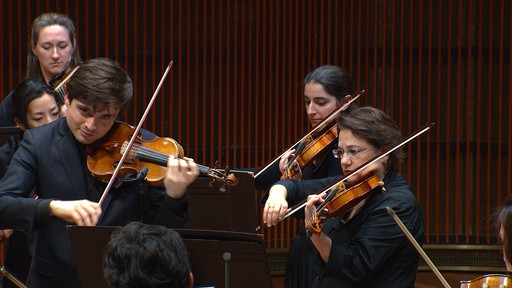
28:09
Associate Director and Editor: Janet Shapiro
Audio: Cameron Wiley, Classical MPR


It’s been supposed that Sir William Walton’s legacy suffers from his being “Sir William Walton”—that is, that the stodgy sound of his name and knighthood creates false preconceptions about the character of his music. Born in Oldham in 1902, Walton absorbed a wide array of musical innovations throughout his formative artistic years. Although his foundation was decidedly English, springing primarily from his boyhood years as a chorister at Christ Church Cathedral, he was equally fascinated by a wide array of composers and musical styles. The range of his tastes, the composer Bruce Adolphe surmises, creates in Walton’s own music “the sense that George Gershwin and Harold Arlen meet Arnold Schoenberg and Elgar and Brahms and Strauss and they’re all having a big party.”
Despite such eclecticism, Walton’s music is both streamlined in its conception and uniquely his own. Such is evident in his Sonata for String Orchestra (originally String Quartet No. 2 in A Minor). When Sir Neville Marriner requested a work for string orchestra for the Academy of St. Martin-in-the-Fields, Walton obliged, not with a new composition, but with this transcription of his earlier quartet, composed between 1945 and 1946. (The 70-year-old composer enlisted his friend and colleague Malcolm Arnold to assist; Arnold completed the transcription of the last movement, under Walton’s supervision.) The first movement of the orchestral version deviates from the Quartet somewhat; the remaining three, though virtually note-for-note transcriptions, are nevertheless freshly reimagined by means of ensemble texture, at times utilizing the principal strings to achieve a sense of intimacy (prompting English composer Christopher Palmer to suggest relabeling the work “Concerto for String Quartet and String Orchestra”).
Witness the beginning of the Allegro first movement, a ruminative dialogue between solo strings, before its expansion to the full ensemble amplifies the conversation. So too is Walton’s assimilation of a broad range of styles on display here. Might the sharp-tongued second theme vaguely suggest a Bartók folk dance, displaced from the Rumanian countryside to rural England? This tune becomes the subject of a brief fugato passage in the movement’s central development section. When the first theme returns, it does so fueled by an injection of the fugato’s rhythmic verve.
The restless energy of the Allegro’s second theme extends into the following movement, a bracing, biting Presto. The Lento third movement’s heartfelt melodic character and pseudo-jazzy chords evoke Gershwin and Arlen, but strained through the modernism of Stravinsky, et al. The Sonata for Strings concludes with an exuberant rondo.

We need your support to continue sharing music with people everywhere, completely free of charge.